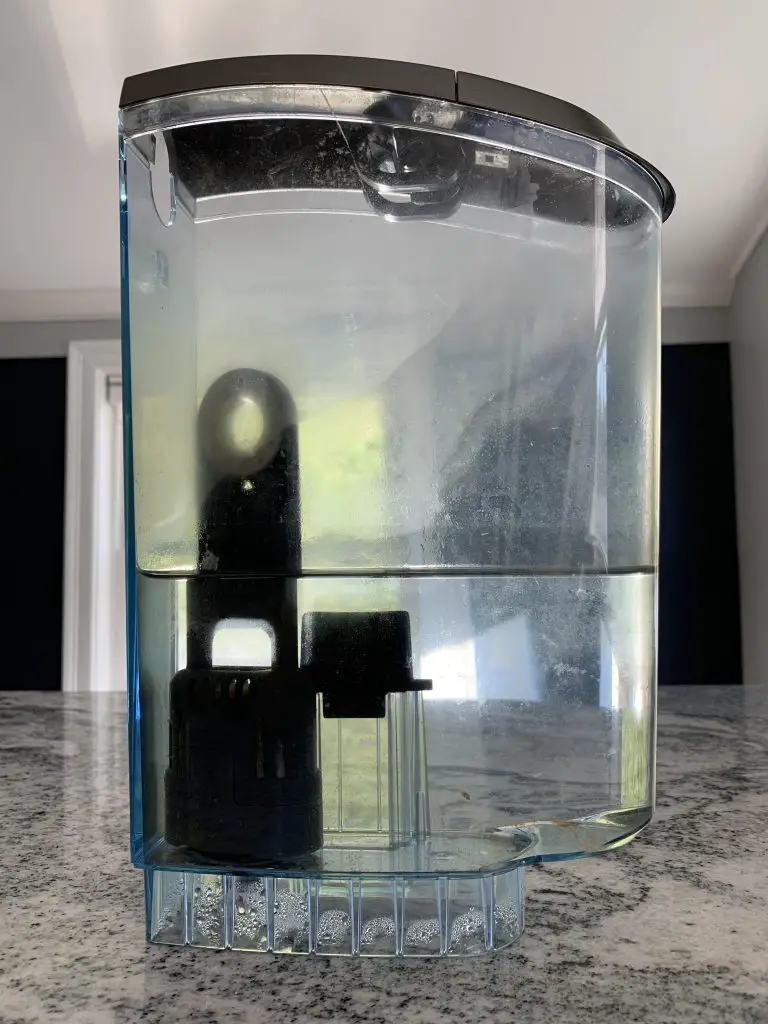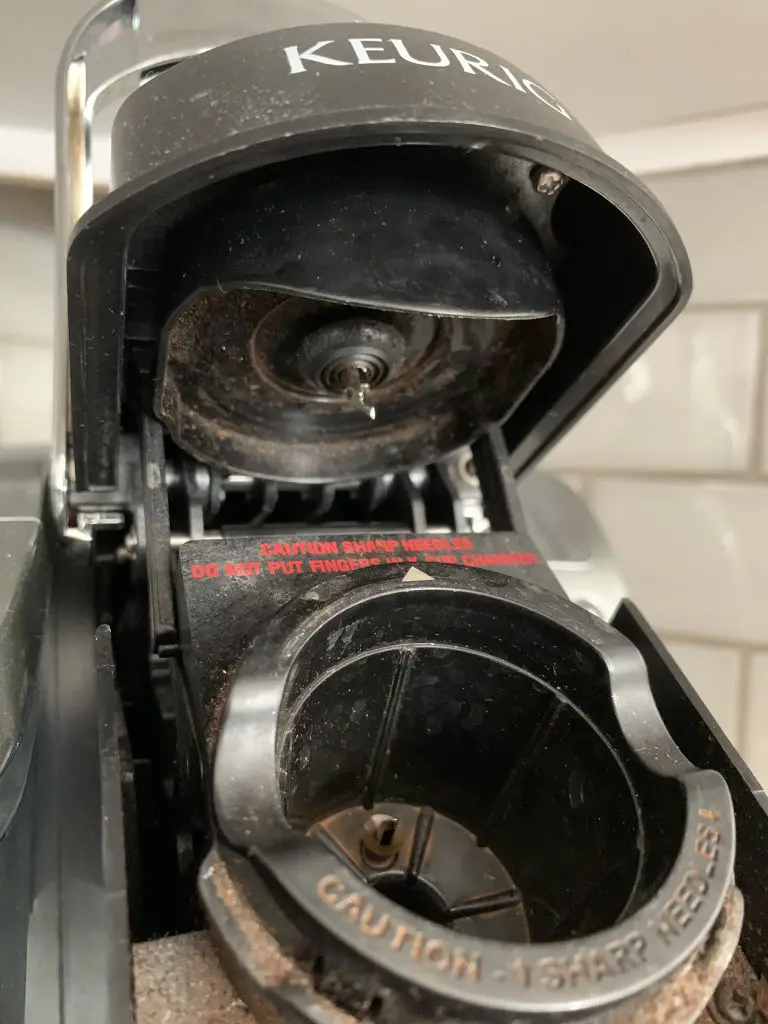Keurig Not Pumping Water? 5 Easy Solutions To Try
If your Keurig is making a loud noise but is not dispensing water when you hit brew, then it is clogged. There are a few common problems that can result in your Keurig not pumping water. Keep reading to learn where Keurigs can get clogged and how to fix these problems with water flow.
Keurig Not Pumping Water Top Reasons
The six most common reasons for a Keurig not pumping water are:
- Not enough water in the tank
- Issue with the water magnet
- Some debris blocking the exit from the water tank
- Air may have gotten into the water pipes, causing a blockage
- Limescale buildup is blocking the proper water flow inside the machine
- The entry and / or exit needles are clogged
You should always keep your water tank filled to the max line. Here is how you can attempt to fix the other potential issues.
How To Fix A Keurig Not Pumping Water
Solution 1: Clear The Water Tank Exit

Water has to be able to freely flow from your tank into the machine. Make sure your tank is attached securely. If it is, then there may be mineral buildup around the exit nozzle that is causing a clog and preventing your Keurig from pumping water. Here’s how to assess this issue and unclog it:
- Empty the water tank. Remove the water filter holder.
- Flip the the reservoir over. Locate the nozzle with the spring. Take something dull like a the eraser end of a pencil and try pushing the spring down a few times. If it moves with ease, you can rule out any issues with that piece.
- Put the tank back on the machine. Fill it with about two to three inches of water.
- Grab a turkey baster. Suck up a little of the water from the tank.
- Squirt the baster directly into that top side of the black nozzle where the water should exit the tank. Repeat this several times, working all the way around the nozzle two or three times.
If you start to see particles floating up from the nozzle, this is calcium buildup that was causing the block. Try running a hot water cycle into a measuring cup to see if the machine will pump water and brew a full cup.
Solution 2: Clear A Possible Air Lock
If you every accidentally ran a brew cycle with not enough water in the tank, it is possible that air has gotten inside the water tubes. This may be causing a clog that is preventing the Keurig from pumping water.
- Fill the tank about a quarter of the way with water.
- Lift the tank up and down quickly. You should see little air bubbles coming up from the water intake valve at the base of the reservoir. Repeat until the bubbles stop appearing.
- Fill the water tank with water to the max line. Run a hot water brew cycle. If water starts flowing through the machine, you’ve fixed the issue.
Solution 3: Descale To Remove Internal Water Flow Blocks
If you found calcium buildup in your water tank, it is likely inside your machine too. As the water used to brew your K-cups travels through your brewer, it leaves minerals behind that cause limescale to buildup inside your machine. Eventually this buildup can get big enough to result in your Keurig becoming clogged. When this happens, your Keurig won’t dispense any or enough water.
You should descale every 3 to 6 months, even if you are using a water filter. If your tap has “hard water,” meaning it contains a high level of minerals, then you should descale your brewer more often. If you are unsure if you have hard water, you can get a low-cost testing kit.
Keurig makes its own descaling solution that works with all models. The safe formula has no odor and acts fast to remove mineral buildup with gentle citric acid. You can buy the solution alone or as part of a bundle with rinse pods and filters that will also help you keep your machine clean.
Once you have the descaling solution, follow these instructions to descale your Keurig. If you’ve had your machine for more than 6 months and never descaled, or if you have very hard water, you may need to run this process at least 2 times.
Solution 4: Unclog The Needles

When you brew a K-cup, there are needles inside your coffee maker that make two holes in the pod. This allows hot water to pass through the capsule and eventually make its way to your cup. The coffee grounds can get stuck around the needle and eventually become dry and hard. This is especially likely to happen if you don’t discard your pods soon after brewing. As a result, the ground coffee build up starts to block the water flow inside your Keurig, eventually resulting in a clogged needle and a machine that will not pump water.
If you have a Keurig 2.0, you can use the orange cleaning tool that came with your brewer. If you lost it or if you have a different model, you can use this paper clip method to clean the needles:
- Straighten one end of a paper clip.
- Turn off the brewer and unplug it and remove the water reservoir.
- Grab the sides of the pod holder and remove it from the brewer by gently pulling away.
- Press the button on both sides to separate the holder from the housing. Push the lever to show the exit needle, then hold it down while flipping the holder over.
- Insert the straight end of the needle and then move it around in a circle a few times. Rinse the pod holder with water and set it aside.
- Open the handle and look underneath to see the top entrance and exit needles. Insert the paper clip in each and move it around to clean.
Solution 5: Check The Water Magnet Alignment
If you look inside your water tank, you’ll notice that there is a magnet. Your Keurig uses this magnet to detect the level of water in the reservoir. Over time, this magnet can become misaligned and stuck due to vibrations from the machine while brewing. When this happens, the brewer is unable to detect the water level and will not pump water.
To fix this gently tap the tank near the magnet housing. If this doesn’t move it try giving it a little shake. If it is still stuck after this, empty any water in the tank, clean it with a gentle soap and then fill it with water again. After cleaning, if you still can’t get it to move, you will likely need to get a replacement tank.

